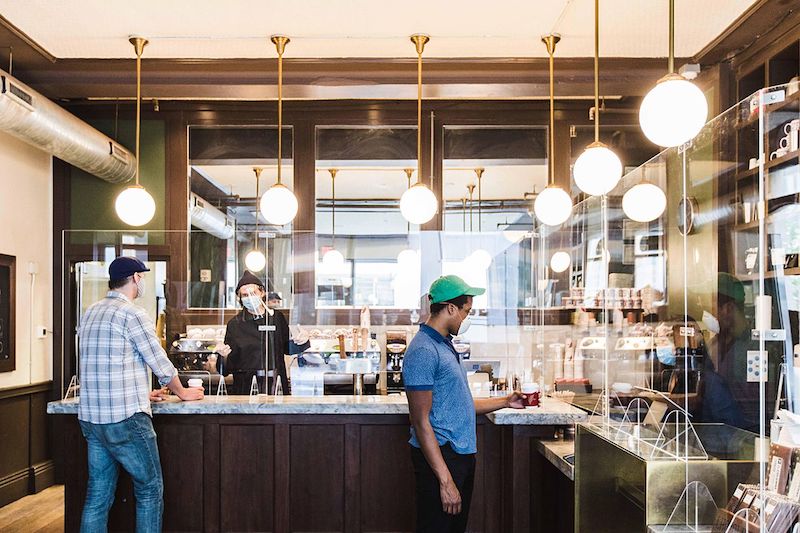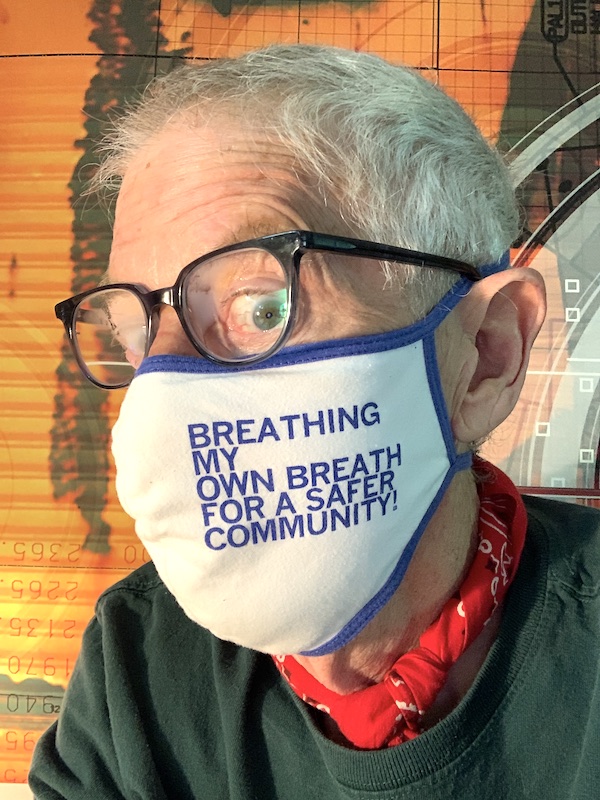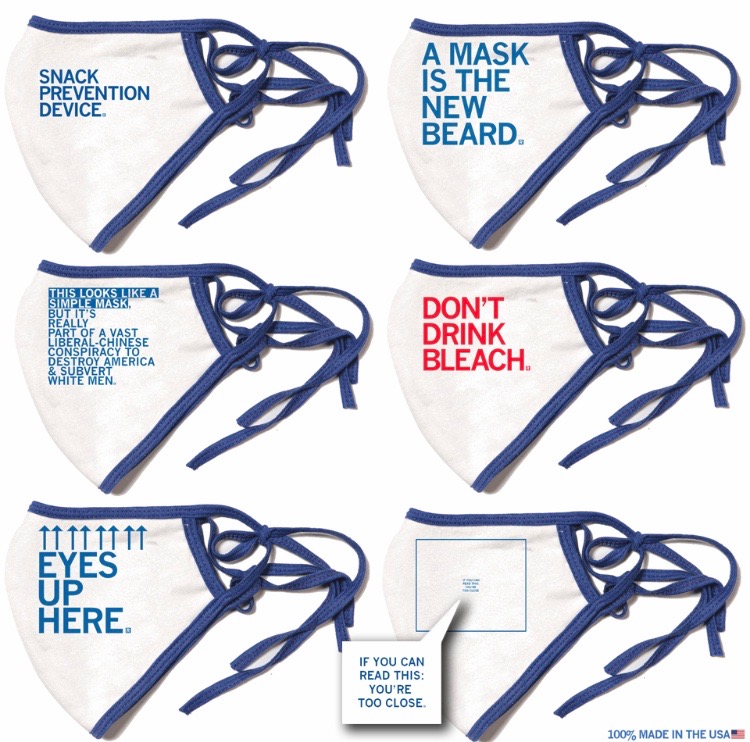noun: the ups and downs of a pandemic. One day you’re loving your bubble, doing work outs, baking banana bread and going for long walks and the next you’re crying, drinking gin for breakfast and missing people you don’t even like.
Tag Archives: COVID-19
My growing face mask collection
What happens when you break quarantine?
Coffee shops post-Covid

“La Colombe, a Philadelphia-based coffee chain, is taking pages out of the airport and pharmacy handbooks in retrofitting 30 of its cafes in six cities for safety. Customers line up outside, where a greeter takes orders at the door “to keep fingers off of touchscreens.” Once inside, patrons, who must wear masks, move through a line. Rather than use the ribbon tape that creates a maze at an airport check-in, La Colombe has installed acrylic panels to frame the lines. Customers must wait six feet apart, and may add food from the grab-and-go case while waiting in line. Inside seating is still prohibited by law.”
Source: The Philadelphia Inquirer
Natural Selection
“If a vaccine against coronavirus becomes available to the public, 49% say they plan to get vaccinated, and 20% say they will not. Another 31% are not sure.”
Just This Breath
When you hear someone you love and think is smart and literate say Oh it’s no big deal if I catch the virus, say “I love you and you’re smart and literate, and please read this story, because you’re wrong about it not being a big deal.”
The virus is hidden inside of me. I feel its force and power. My body aches. Cold knots snarl in my calves and my thighs; my back feels frozen; shivers ripple up my arms. By the time I reach the birdbath, I’m sweating in the soft breeze. I close my eyes. The hardest part is taking the next breath. I must breathe very, very slowly, in a very specific way. Breathing has become like remaining steady on a balance beam over a dark pit.
Perfect example of save my life story-telling. (An essay by Heather Sellers)
Let’s see what happens
If 80% of Americans wore masks…
“If 80% of Americans Wore Masks, COVID-19 Infections Would Plummet.” Good, hard science. If you’re not wearing a mask, I don’t want to be within 20 feet of you. Stay the fuck away.
RAYGUN makes clever face masks
“If you don’t solve the biology, the economy won’t recover”
This is the best thing I’ve read so far on knowing and avoiding the risks of COVID-19. The author is Erin S. Bromage, Ph.D., an Associate Professor of Biology at the University of Massachusetts Dartmouth. Dr. Bromage graduated from the School of Veterinary and Biomedical Sciences James Cook University, Australia where his research focused on the epidemiology of, and immunity to, infectious disease in animals.
Dr. Bromage’s research focuses on the evolution of the immune system, the immunological mechanisms responsible for protection from infectious disease, and the design and use of vaccines to control infectious disease in animals. He also focuses on designing diagnostic tools to detect biological and chemical threats in the environment in real-time.
This short article was packed with useful information. One of my favorites:
“We know most people get infected in their own home. A household member contracts the virus in the community and brings it into the house where sustained contact between household members leads to infection.”
You can download (PDF) the full article here.




